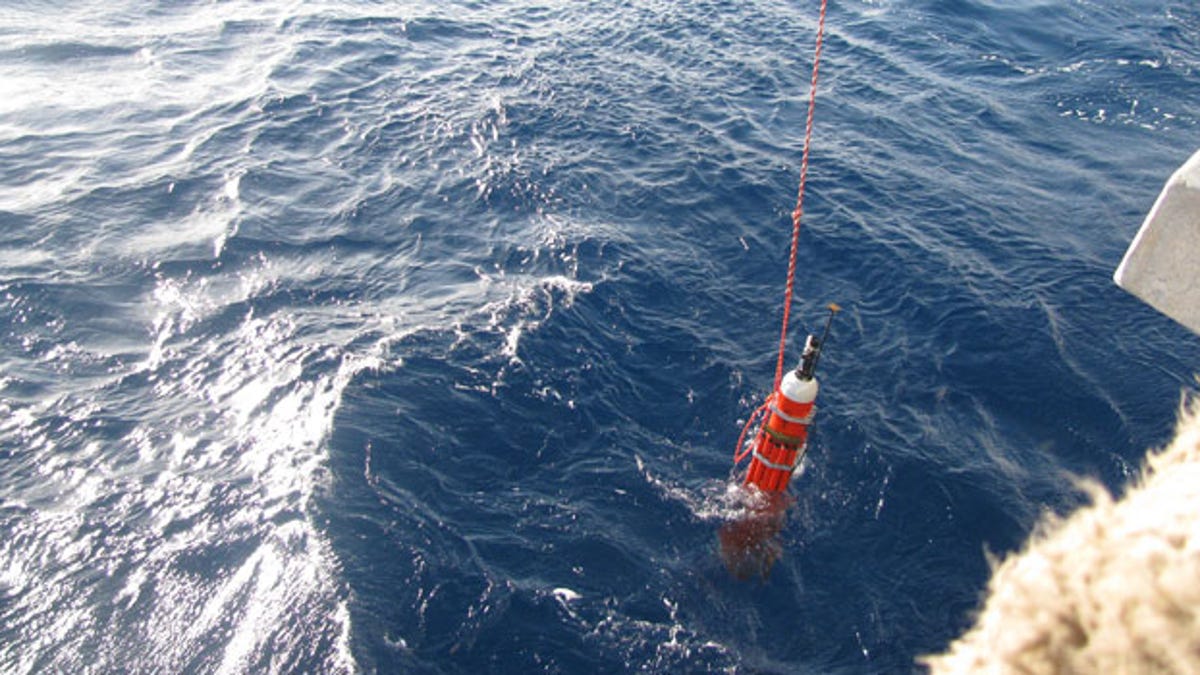Robotic undersea vehicle draws power from ocean
Autonomous vehicle built by NASA, U.S. Navy, and academic researchers cruises through a three-month demo, drawing power only from variations in sea temperatures.

Researchers say they've taken underwater robotics to the next level, successfully running an autonomous robotic vehicle off the Hawaiian Islands for more than three months, powered only by energy harnessed from changes in sea temperatures.
The Sounding Oceanographic Lagrangrian Observer Thermal RECharging vehicle (or Solo-Trec, for short) is the product of a years-long joint research project by NASA, the U.S. Navy, and Scripps Institution of Oceanography, and the University of California at San Diego. The group said Monday that Solo-Trec is the first such vehicle to be powered entirely by the ocean's thermal energy.
Solo-Trec works by taking advantage of temperature changes as it moves between warmer, shallower areas to the cooler temperatures found in the depths. It's outfitted with 10 external tubes of a waxy substance known as phase-change material. In the warmth of the shallow waters, the substance melts and expands; in deeper waters, it cools, solidifies, and contracts. The expansion caused by warm temperatures pressurizes oil inside the device, which drives a hydraulic motor that, in turn, recharges Solo-Trec's batteries. This system has allowed the 183-pound vehicle to make more than 300 dives from the ocean's surface to a depth of 1,640 feet--as well as powering its buoyancy controls and scientific, GPS, and communication instruments.
"People have long dreamed of a machine that produces more energy than it consumes and runs indefinitely," said NASA's Jack Jones, a Solo-Trec co-principal investigator, in a statement. "While not a true perpetual motion machine, since we actually consume some environmental energy, the prototype system demonstrated by [NASA's Jet Propulsion Laboratory] and its partners can continuously monitor the ocean without a limit on its lifetime imposed by energy supply."
For now, Solo-Trec is a prototype; its main function is to help scientists evaluate the potential for powering future research vessels in the same way. But NASA says the same technology could be used to create a fleet of autonomous bots capable of cruising the seas and monitoring anything from climate data and marine life to mapping terrain and conducting underwater surveillance.

